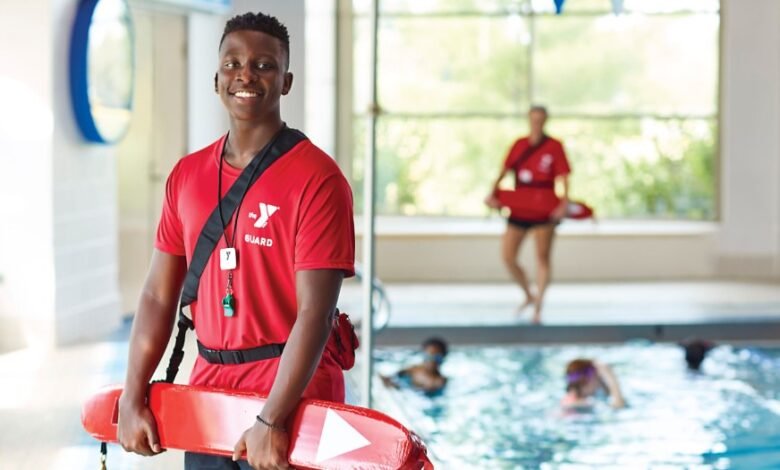Exploring Careers in Water Safety: The Importance of Lifeguard Training

There are many professions that can turn into a satisfactory career with good earning. When it comes to satisfaction from a career there is nothing better than a lifesaving profession. one of such professions is lifeguarding that provides you the opportunity to serve public by making the aquatic facilities safer. Whether you’re searching for a seasonal job or a long-term career, lifeguarding offers many chances for personal development, skill enhancement, and community service.
This article examines the several career paths in water safety, the need for lifeguard courses and lifeguard training, and how groups like the American Lifeguard Association (ALA) are trying to solve the lifeguard shortage by pushing for professional training and improved working conditions.
Why pick a career in water safety?
A vocation requiring responsibility, rapid thought, and physical fitness, lifeguarding is more than just a seasonal job. Public safety is the first priority of lifeguarding but if you see beyond it, this profession has a the potential to open doors in aquatics administration, emergency medical services, and even firefighting. Lifeguards are taught to prevent accidents, react to emergencies, and save lives.
Many facilities are having difficulties finding certified lifeguards since demand for them is strong. Better pay, more benefits, and enhanced training programs are advocated for by groups such as the American Lifeguard Association in order to draw more people to the industry.
Professional growth and the function of lifeguard courses
Aspiring lifeguards need to complete lifeguard classes before stepping onto the pool deck or patrolling the beaches so that they have the needed abilities and certifications. Essential subjects covered in these courses include:
- Learning how to approach distressed swimmers and execute rescues helps to develop water rescue skills.
- Giving life-saving treatment in crises using CPR and first aid.
- Training in automated external defibrillators (AEDs) involves using this vital device in cardiac emergencies.
Career Paths in Water Safety
Certified lifeguards have several career options available within the aquatic sector. Common chances include:
Beach Lifeguard
One of the most difficult but satisfying jobs in water safety is being a beach lifeguard. Since ocean conditions can change swiftly, lifeguards need to be very proficient in openwater rescues, wave dynamics, and rip current detection. Many coastal cities have full-time jobs with excellent salaries and benefits.
Pool lifeguard
Usually, employing lifeguards to monitor swimmer safety is found in public pools, private clubs, and neighborhood centers. This post sometimes entails helping with aquatic activities, administering swimming tests, and upholding swimming policies. Certain businesses also provide advancement chances, such as becoming a head lifeguard or swim teacher.
Water park lifeguard
Because of the array of attractions like wave pools, slides, and lazy rivers, water parks call for particular lifeguarding abilities. In these situations, lifeguards have to be alert in keeping an eye on big groups and rapidly addressing events.
Manager of Aquatics or Director
Becoming an aquatics director is a logical next step for people aiming to further their careers. This position calls for supervision of lifeguard teams, management of facility operations, and compliance with safety rules. Many directors begin as lifeguards and get expertise through more education and leadership positions.
Firefighting and Emergency Medical Services (EMS)
For careers in emergency response, lifeguarding offers a good base. Many lifeguards find their first aid, CPR, and rescue expertise quite useful as they move into EMS or firefighting jobs. Some fire departments even give candidates with lifeguarding experience top priority.
How to Start Lifeguard training
Becoming a lifeguard starts with signing up for a certified lifeguard training program if that appeals to you. This is what you can expect:
- Requirements: Most programs call for applicants to be at least 15 years old, pass a swimming test, and prove their physical fitness.
- Usually spanning 25–30 hours, training combines in-person practice with internet learning.
- Trainees must pass written and practical examinations upon course completion to get their certification.
Organizations like the American Lifeguard Association offer nationally acknowledged certifications accepted at aquatic facilities nationwide.
Final Word
Though difficult, a career in water safety is very satisfying. By completing lifeguard training and getting certification through reputable groups like the American Lifeguard Association, you may start on a path that not only saves lives but also offers doors to many professional opportunities.
Given the continuous lifeguard scarcity, there has never been a better time to enter this vital sector. Should you have a passion for assisting others, like working in vibrant settings, and want a job that truly counts, lifeguarding might be the ideal fit.
Become involved in a career that helps us to keep our waters safe for everyone, starting right now by looking for lifeguard classes nearby.



